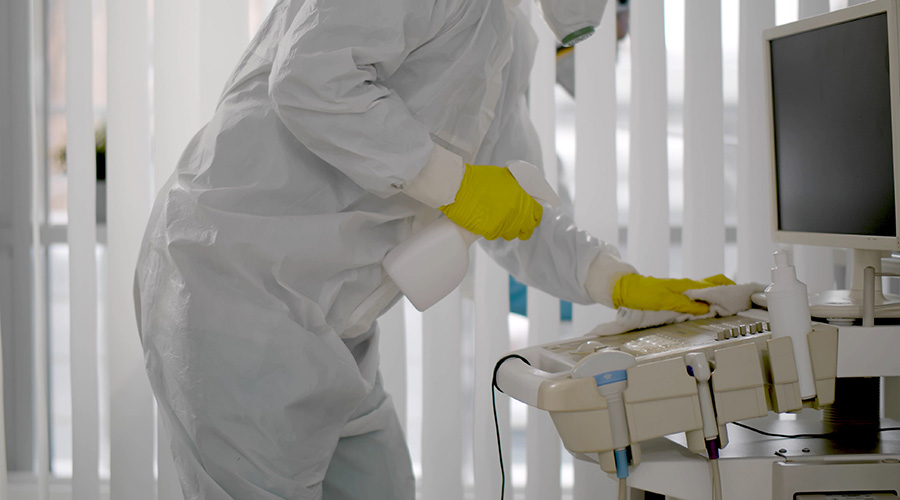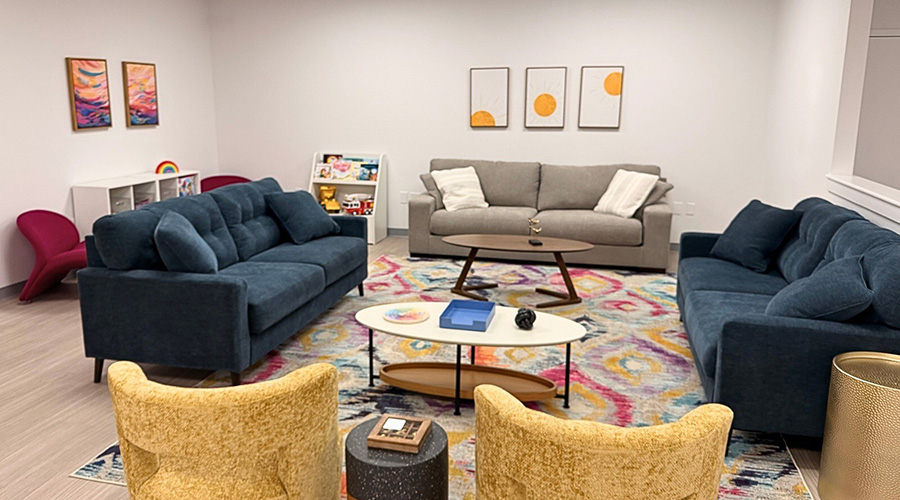HVAC systems play a major role in infection control, as they can be outfitted to help neutralize pathogens coming in and out. This is especially critical in healthcare facilities, as occupants can be exposed to a plethora of airborne germs regularly. In this manufacturer roundtable, Healthcare Facilities Today speaks with HVAC manufacturers about outfitting HVAC systems to assist with infection control.
How can HVAC systems be outfitted to aid in infection control in healthcare facilities?
“ASHRAE Standard 170 establishes minimum filtration requirements for the spaces within a healthcare facility. Depending on the space type the level of filtration increases with an increasing need for an aseptic environment. Protective Environment Rooms, for immunocompromised patients, and critical Operating Rooms for orthopedic, transplant, or neurosurgery, HEPA filtration is required.
For those spaces, the air cleanliness is so critical that the HEPA filters must be located in the diffusers supplying air to the space. This requirement ensures that the airflow is being filtered as it enters the space and hasn’t been contaminated by particles in the ductwork between the air handler and diffusers. For other spaces that are not as critical increasing the filtration level beyond the Standard 170 minimums will help to improve air cleanliness and further reduce the risk of airborne infection transmission. Additional measures like upper-room UV lighting will irradiate airborne particles above the occupied zone mitigating the spread of pathogens as well.”
— Matthew McLaurin, segment manager, Greenheck
“First, it is worth stating that healthcare facilities need to meet ASHRAE 170 which has requirements that provide environmental control for comfort, asepsis and odor in health care facilities. This is required by The Joint Commission. Having said that, addressing infection control is a serious business. With respect to HVAC systems, our approach is to ensure ASHRAE 170 is being met and then focus on ventilation, filtration, disinfection and isolation.
With ventilation, economizers and ERV/HRVs can help allow facilities to bring in more outdoor air which should be free of contaminants and allows you to rely less on return air which could carry an infectious particle. Next is filtration, where the system can incorporate multi-stage filtration with HEPA filters to capture harmful airborne pathogens. Then, if additional disinfection technology is needed or desired, technologies like UV germicidal irradiation are good, which can be installed in-line at the factory or as field-retrofit options, to further neutralize airborne threats. Using UV irradiation for applications like kill tunnels or applied to cooling coils and drain pans are great ways to keep the path of air clear of obstructions and clean.
Last is isolation, which can be achieved through room pressure controls and room pressure monitoring systems. Using fast-acting venturi valves and controls to ensure negative spaces are negative and positive spaces are positive can help keep air moving in the right direction. By combining these filtration and disinfection strategies with optimized airflow management, we create a healthier environment for patients and staff alike.
If we include building automation in the mix of systems to “outfit”, software is available that tracks the temperature, pressure and humidity of critical spaces (like an operating room) to track continuous compliance to the allowed ranges set by ASHRAE 170.1 and audited by companies like The Joint Commission. This software is even capable of analyzing data to automatically provide a disposition of momentary “out of compliance” events saving staff time to focus on patient care. “
— Brian T. Estill, portfolio director – healthy buildings and sustainability, Johnson Controls
“HVAC systems in healthcare facilities play a crucial role to aid in infection control. Here are some ways the systems can be outfitted to assist:
- High-Efficiency Air Filters: Using high-efficiency air filters, such as High-Efficiency Particulate Air (HEPA) filters, effectively traps and removes airborne particles, including certain bacteria, viruses and other pathogens.
- Filtration Efficiency and MERV Ratings: Hospitals and healthcare facilities should ensure that their HVAC systems meet or exceed the appropriate Minimum Efficiency Reporting Value (MERV) rating for air filters. Higher MERV ratings indicate better filtration efficiency.
- Ultraviolet Germicidal Irradiation (UVGI): UVGI systems use Ultraviolet (UV) light to disinfect the surfaces of HVAC components such as coils and air handling units. This helps kill or deactivate harmful microorganisms, helping to reduce the risk of them spreading through the air.
- Positive and Negative Pressure Rooms: HVAC systems can create positive or negative pressure rooms based on the facility's needs. Positive pressure rooms prevent contaminated air from entering, while negative pressure rooms ensure that contaminated air from within does not flow out, reducing the risk of cross-contamination.
- Increased Ventilation Rates: Increasing the amount of outdoor air brought into the healthcare facility can enhance ventilation and dilute potential contaminants. This helps in reducing the concentration of pathogens in the air, improving infection control.
- Energy Recovery Ventilation: Energy recovery ventilators (ERVs) or heat recovery ventilators (HRVs) can be integrated into HVAC systems to provide fresh air while still recovering and utilizing the energy from the exhausted air. This helps with both ventilation and energy efficiency.
- Regular Maintenance and Inspections: Proper and regular maintenance of HVAC systems is crucial to ensure optimal performance and infection control. Routine inspection, cleaning, and maintenance of ducts, filters and other system components are essential to prevent the spread of contaminants.
It's important to consult with an HVAC professional and follow industry guidelines when considering or implementing these measures to ensure they are appropriately designed and installed for effective infection control in healthcare facilities.”
— Christy Fetsch, CEM, LEED AP, healthcare vertical market strategy leader, Trane
“Maintaining appropriate humidity levels is essential for infection control. Optimal RH levels can inhibit the growth and transmission of airborne pathogens, such as viruses, bacteria, and fungi. Adequate humidity also supports the body's natural defense mechanisms, enhancing the effectiveness of respiratory tract mucous membranes in trapping and neutralizing pathogens. Conversely, dry indoor air impairs these defenses, increasing susceptibility to respiratory infections.
While the specific requirements in any given healthcare space may vary, a general rule of thumb from the American Society of Heating, Refrigerating, and Air Conditioning Engineers (ASHRAE), maintaining indoor relative humidity levels between 40 percent and 60 percent RH is ideal for mitigating virus transmission. This range hinders the survival and spread of pathogens while enhancing overall occupant comfort.
Various humidification and dehumidification technologies are available to achieve and maintain these levels, each with advantages and applications. Equipment can be sized to serve an entire building, section, or even a single room. Humidification technology can be installed as a retrofit for existing buildings or designed into new construction projects. The type of indoor space, air quality goals, energy source, required level of maintenance, capacity, etc., will determine the best technology for each building. If a humidification system exists, it should be reviewed to ensure it is appropriately sized, operating correctly and energy efficient since building usage often changes over time.
It is important to Invest in high-performance commercial humidity control systems to proactively protect against the adverse effects of humidity imbalance. Robust humidification and dehumidification systems that have been tailored and sized for a specific application or environment are critical assets. These systems should offer precision control and seamless integration with existing HVAC infrastructure. Humidity sensors and real-time monitoring platforms can be leveraged to continuously assess humidity levels across the facility.”
— Jennifer Montville, director of marketing, DriSteem
Jeff Wardon, Jr. is the assistant editor for the facilities market.

 Why Identity Governance Is Becoming a Facilities Management Issue
Why Identity Governance Is Becoming a Facilities Management Issue Habitat Health Opens South Los Angeles PACE Center
Habitat Health Opens South Los Angeles PACE Center Denton County MHMR Center Suffers a Data Breach
Denton County MHMR Center Suffers a Data Breach What Every EVS Leader Needs To Know
What Every EVS Leader Needs To Know Blackbird Health Opens New Clinic in New Jersey
Blackbird Health Opens New Clinic in New Jersey